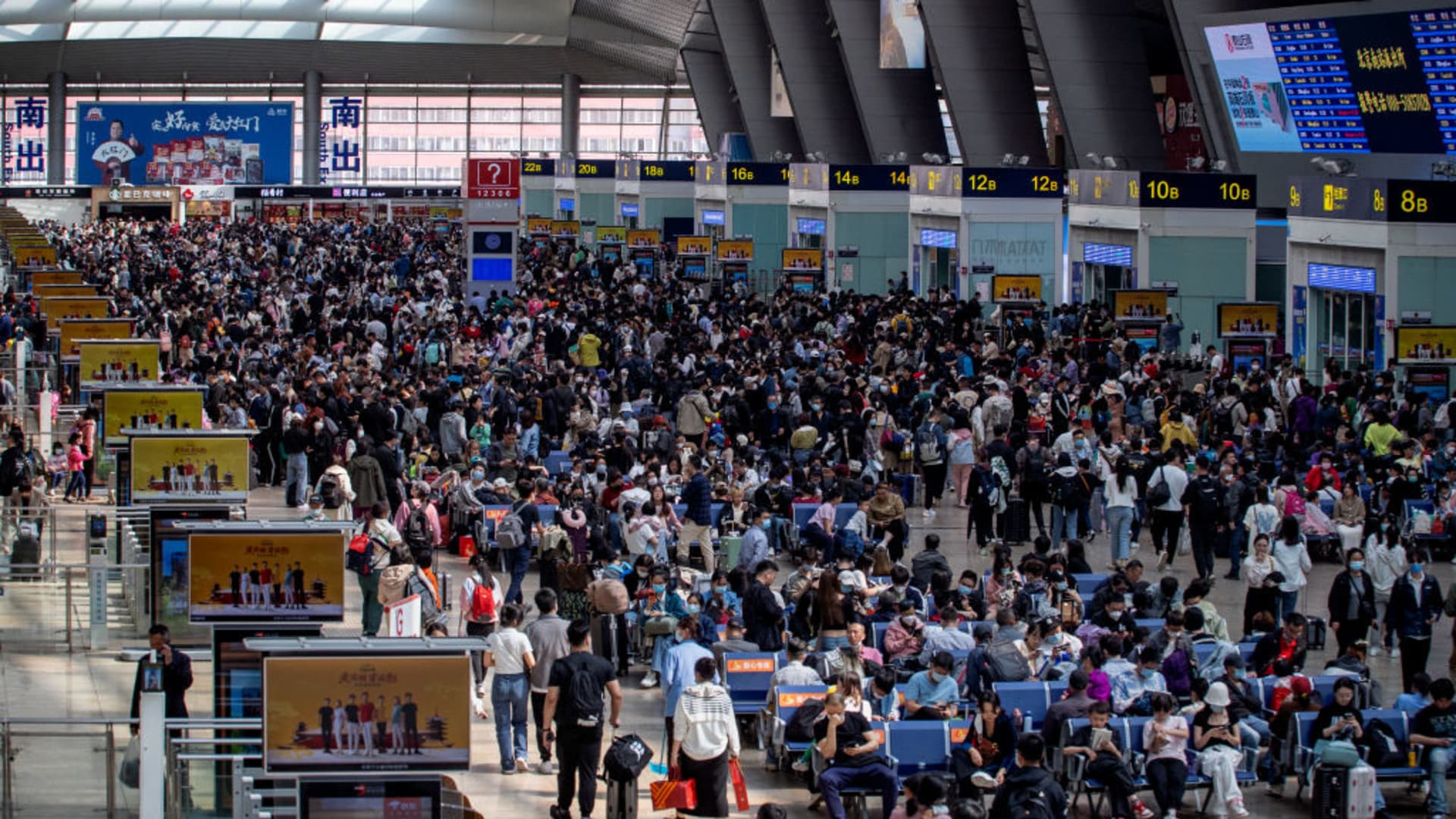IMF raises 2023 economic outlook for Asia, sees China and India making up half of global growth

BEIJING, CHINA – APRIL 29: Beijing South Railway Station is seen in Beijing on Saturday, April 29, 2023.
Anadolu Agency | Anadolu Agency | Getty Images
The International Monetary Fund raised its forecast for Asia-Pacific, saying the region’s growth will be primarily driven by China’s recovery and “resilient” growth in India. This comes as the rest of the world braces for slower growth from tightened monetary policy and Russia’s invasion of Ukraine.
The organization predicts Asia-Pacific’s gross domestic product to expand 4.6% this year, which is 0.3 percentage points higher than its forecast in October, according to its May regional economic outlook released Tuesday.
The two largest emerging market economies of the region are expected to contribute around half of global growth this year.
International Monetary Fund
The IMF’s upgraded outlook would mean the region would contribute around 70% of global growth, it said. The region expanded 3.8% in 2022.
“Asia and Pacific will be the most dynamic of the world’s major regions in 2023, predominantly driven by the buoyant outlook for China and India,” the IMF said in its report.
“The two largest emerging market economies of the region are expected to contribute around half of global growth this year, with the rest of Asia and Pacific contributing an additional fifth,” it said.
On a country-basis, the organization raised its growth outlook for China, Malaysia, the Philippines, and Laos to 5.2%, 4.5%, 6%, and 4% respectively.
While it trimmed its forecasts for India’s full-year growth, the IMF still expects the economy – which is on the cusp of becoming the most populous country in the world – to expand by 5.9% in 2023.
Slower advanced economies
Despite the overall optimism for the region — mostly due to rosier outlooks for emerging markets — the IMF downgraded its predictions for Japan, Australia, New Zealand, Singapore, and South Korea.
“Stronger external demand from China will provide some respite to advanced economies in the region, but is expected to be largely outweighed by the drag from other domestic and external factors,” it said, adding growth in Asia outside of China and India “is expected to bottom out in 2023.”
It lowered Japan’s 2023 growth estimates to 1.3% to reflect “weaker external demand and investment and carryover from disappointing growth in the last quarter of 2022.”
Weakening domestic demand in Australia and New Zealand from central banks’ tightening is also expected to “dampen growth prospects” this year to 1.6% and 1.1%, respectively, it said.
“Inflationary pressures in Asia’s advanced economies are expected to be more persistent than envisioned in the October 2022 World Economic Outlook, as wage growth has recently become more apparent in Australia, Japan, and New Zealand,” the IMF said in its report.
Spillover from China
High consumption in China is likely to spill over to the rest of the Asia-Pacific, the IMF said, adding that China’s reopening after lifting most of its stringent Covid restrictions will “result in a pickup in private consumption that will drive China’s growth rebound.”
That effect is expected to exceed that of other growth drivers, such as investment.
The near-term economic impact of China’s recovery will “likely vary across countries, with those more heavily reliant on tourism likely reaping the most benefit,” it said, noting that a rise in China’s imports will be most strongly reflected in services.
The IMF said Asia-Pacific economies could also see knock-on effects from China’s ongoing geopolitical tensions. The organization previously estimated global tensions could disrupt overseas investment and lead to a long-term loss of 2% of the world’s gross domestic product.
“Risks of further global trade fragmentation are becoming more salient, considering ongoing US-China trade disputes (including new restrictions on trade in high-tech products) and heightened geopolitical tensions linked to Russia’s war in Ukraine,” it said.










